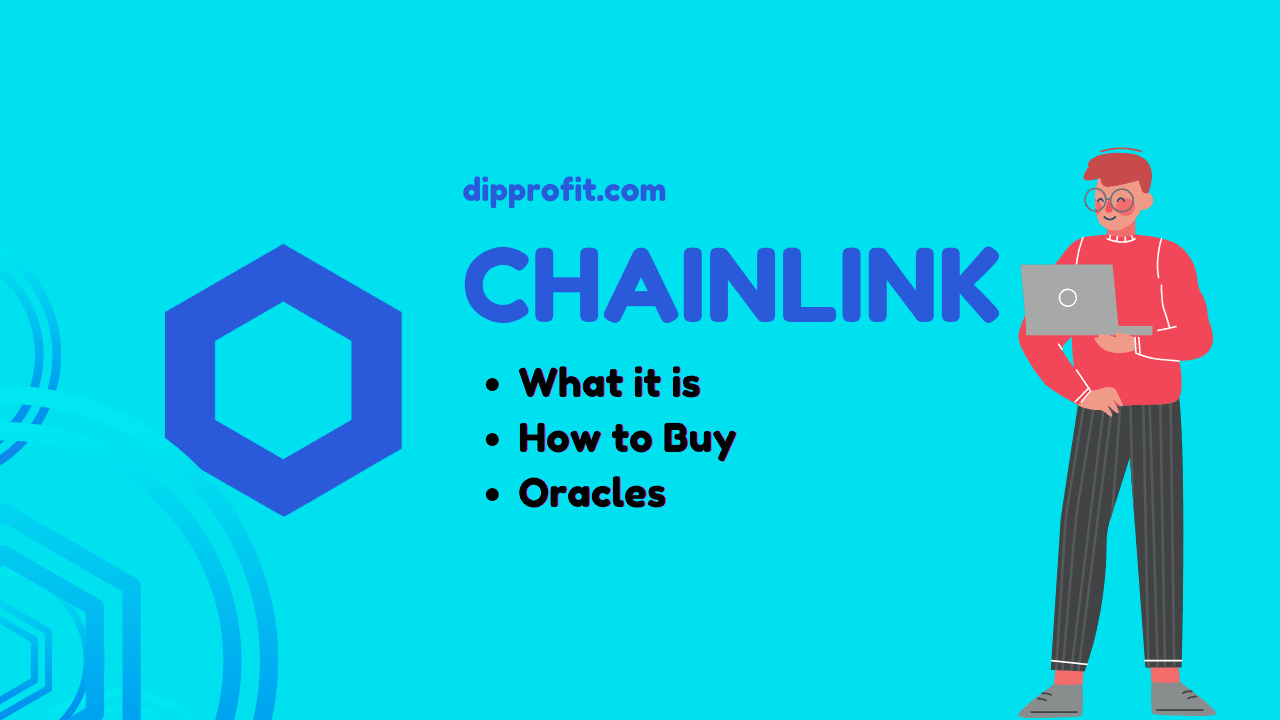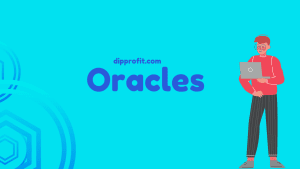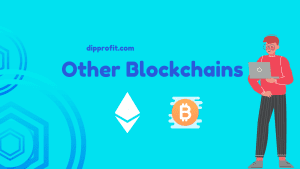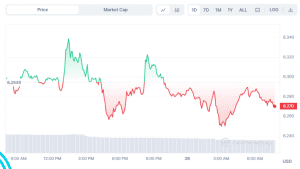
Chainlink is a decentralized oracle network that serves as a reliable intermediary between smart contracts and external data sources.
It was developed by Sergey Nazarov and Steve Ellis and launched in 2017.
Chainlink utilizes a network of nodes (known as oracles) to retrieve and verify real-world data and acts as a reliable intermediary between smart contracts and external data sources.
It connects blockchain-based smart contracts with real-world data, APIs, and off-chain systems, allowing for secure and transparent data transmission.
Its network of nodes, called oracles, fetch and validate data from diverse sources by using smart contracts to interact with live data and make autonomous decisions based on the information received.
The team behind Chainlink, known as Chainlink Labs, is focused on advancing the capabilities of the network and driving its adoption in the blockchain ecosystem while also serving as the core development organization responsible for maintaining the Chainlink protocol.
Since its beginning, ChainlinkLabs has gained notable recognition and has become a leading player in the web3 space.
Their technology has attracted the attention of developers, enterprises, and blockchain projects seeking reliable and secure access to real-world data for their smart contracts.
On all of this, ChainlinkLabs still continues to invest in research and development to improve the capabilities of the network by making collaborations with various stakeholders, including blockchain projects, data providers, and industry partners, to expand the functionality and use cases of Chainlink.
Over the years, ChainlinkLabs has focused on strengthening the security and reliability of the network with the introduction of various features and improvements to enhance data integrity, decentralization, and ease of integration for smart contracts.
The success and growth of Chainlink can be attributed to the vision and dedication of the team at ChainlinkLabs, as well as the support and adoption of the technology by the blockchain community.
Through continuous innovation and collaboration, ChainlinkLabs still strives to establish Chainlink as a trusted and essential infrastructure for decentralized applications relying on real-world data.
Importance of Oracles
Oracles play a crucial role in the ecosystem by securely transmitting external data to smart contracts.
They act as trusted agents that fetch, validate, and deliver data from various sources such as APIs, IoT devices, market data feeds, and more.
Oracles provide the necessary data inputs for smart contracts to execute predefined conditions and trigger specific actions autonomously.

They mainly act as a bridge, connecting blockchain-based smart contracts with real-world data sources. This connectivity allows smart contracts to access and utilize external data, expanding their capabilities beyond the blockchain.
By using real-time data from various sources, oracles enable smart contracts to perform complex conditions and actions based on live events. This active functionality improves the flexibility and responsiveness of smart contracts.
Oracles still play a crucial role in ensuring that the data fed into smart contracts is reliable and employ verification mechanisms and consensus algorithms to validate how genuine the data is which minimizes the risk of false or negative information.
Including Oracles in the blockchain ecosystem opens up a multitude of use cases across industries enabling applications in finance, supply chain, insurance, gaming, and many other sectors, where the interaction between smart contracts and real-world data is essential.
Through oracles, smart contracts can make autonomous decisions based on the latest data available to them.
This capability enhances the efficiency and responsiveness of decentralized applications, providing users with reliable and timely results.
ChainLink vs Other Blockchains

Chainlink is not a blockchain itself; rather, it is a decentralized oracle network that works alongside various blockchains, including Ethereum, and Bitcoin.
Here’s how Chainlink differs from other blockchains:
1. Purpose and Function:
- Chainlink: Its main focus is on connecting smart contracts with real-world data and external systems by acting as a bridge, to provide secure and reliable access to off-chain data sources for smart contracts.
- Other Blockchains: Blockchains like Ethereum are designed as distributed ledger technologies that store and validate transactions. They serve as platforms for executing smart contracts, recording transactions, and maintaining decentralized networks.
See also: The Ultimate Guide to Becoming a Blockchain Engineer: Skills, Tools, and Career Path
2. Data Accessibility:
- Chainlink: It specializes in providing access data from external sources to real-world data for smart contracts. It retrieves data from external sources, validates it, and delivers it to the requesting smart contracts.
- Other Blockchains: Other blockchains primarily focus on storing and validating transactions within their networks and typically have limited direct access to external data sources and rely on oracles like Chainlink to interact with off-chain data.
3. Integration:
- Chainlink: Chainlink integrates with various blockchains, acting as an oracle layer to facilitate the interaction between smart contracts and external data. It enhances the capabilities of different blockchains by enabling them to securely access real-world data.
- Other Blockchains: Other blockchains operate independently, focusing on their specific consensus algorithms, transaction processing, and smart contract functionalities.
4. Scalability and Consensus:
- Chainlink: Chainlink’s scalability is primarily focused on handling data requests and ensuring reliable data delivery to smart contracts with a network of oracles to assist in handling high-volume data requests perfectly.
- Other Blockchains: Other blockchains may employ different consensus mechanisms and scalability solutions specific to their networks since their scalability is generally related to transaction processing, network throughput, and block confirmation times.
Native Currency
Chainlink has its own cryptocurrency called Chainlink (LINK), which serves as both a coin and a token.

As a coin, LINK operates on its own blockchain network. It is for transactions within the Chainlink ecosystem, including payments for Oracle services, node operations, and network governance.
And as a token, LINK is also compatible with other blockchain platforms, such as Ethereum.
It can be used as an ERC-20 token on the Ethereum network, enabling it to be traded on decentralized exchanges such as Metamask or TrustWallet and in various Ethereum-based applications.

$LINK is considered a cryptocurrency as it is a digital asset that employs cryptography for secure transactions. It functions independently of any central authority and has a tradable value in the cryptocurrency market.
It is a medium of exchange and represents value within the Chainlink ecosystem. LINK is actively traded on various cryptocurrency exchanges, enabling users to engage in buying, selling, and speculative trading
How To Buy ChainLink

On Binance
- Create an Account: Visit the Binance website (www.binance.com) and sign up for an account. Provide the necessary signup information and complete the registration process.
- Complete Verification (Optional): Depending on your region and desired transaction limits, you may need to complete the verification process. Follow the instructions provided on the Binance platform to verify your identity if required.
- Deposit Funds: Log in to your Binance account and click on the “Buy Crypto” link on the top left of the Binance website navigation, which will show the available options in your country. Follow the instructions to generate a deposit address or scan the QR code provided.
- Purchase USDT or BUSD first: Binance requires you to consider buying a stablecoin in your account to create coin compatibility. If you don’t have USDT, you can purchase it on Binance and place a buy order for USDT or BUSD using your deposited funds.
- Trade LINK: After acquiring the coin, enter the desired amount of LINK you wish to purchase and review the order details. Finally, place your buy order.
- Secure your LINK: Once your order is filled, your purchased Chainlink (LINK) will be credited to your Binance account. For enhanced security, consider transferring your LINK to a personal wallet that supports LINK tokens.
On Coinbase
- Create a Coinbase account: Sign up or download the Coinbase app and begin the registration process. Have a valid ID and proof of address ready, as you may be required to verify your identity.
- Add a payment method: Tap on the payment method box and connect a bank account, or debit card, or initiate a wire transfer. These are the three options you can use to pay for any transactions made with Coinbase.
- Start a trade: On Coinbase.com, select “Buy & Sell.” On the Coinbase mobile app, tap the “+” icon and choose “Buy” on the Home tab.
- Select Chainlink from the list of assets: On the Coinbase website, click the Buy panel and search for Chainlink. On the Coinbase mobile app, type “Chainlink” into the search bar and select it from the results.
- Enter the amount you want to buy: Use the number pad to input the desired amount in your local currency. The app will automatically convert it into the corresponding Chainlink amount.
- Finalize your purchase: Tap “Preview buy” to review the details of your purchase. Ensure everything is accurate and click “Buy now” to confirm your transaction.
- Done: Once the order is processed, you’ll see a confirmation screen. Congratulations! You have successfully purchased Chainlink.
To delve deeper, here are some reliable sources for further reading:
- Official Website: https://chain.link/
- Whitepaper: https://link.smartcontract.com/whitepaper